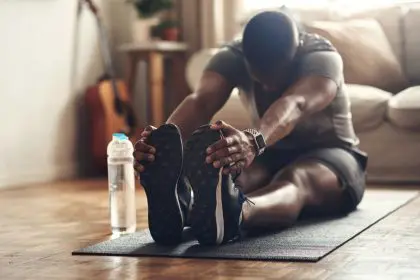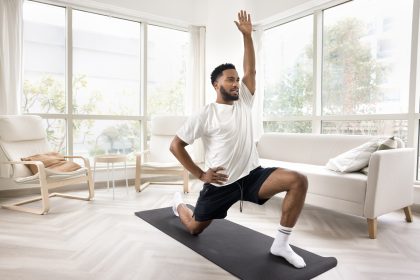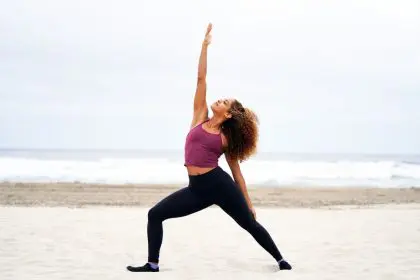The fitness industry has a blind spot when it comes to women over 40. As hormone levels shift and metabolism changes, many women find that exercise routines that worked beautifully in their 20s and 30s suddenly leave them exhausted, injured, or seeing minimal results. This frustrating reality leaves many wondering if staying fit is even possible during this new life phase.
The truth is that women’s bodies undergo significant transformations during midlife that directly impact how they should approach fitness. Declining estrogen levels affect everything from bone density to muscle mass, making traditional high-intensity workouts potentially counterproductive or even harmful. The body’s ability to recover also changes, turning yesterday’s invigorating workout into today’s week-long muscle soreness.
These physiological shifts don’t mean giving up on fitness—they simply require a more thoughtful, tailored approach. The good news is that with the right strategies, women over 40 can actually thrive physically, building strength and vitality that carries them through the decades ahead with confidence and energy.
Understanding these changes is the first step toward creating an exercise routine that works with your body rather than against it. This knowledge empowers women to make smarter choices about their fitness, avoiding the frustration of programs designed for younger bodies while maximizing the benefits of exercise during this critical life stage.
The hidden benefits of midlife exercise
While maintaining an active lifestyle benefits everyone, exercise offers particularly powerful advantages for women over 40. Beyond the obvious perks of weight management and cardiovascular health, regular physical activity directly counteracts many of the challenging physical changes that occur during this life phase.
Perhaps most importantly, consistent strength training helps preserve precious muscle mass that naturally declines with age. This muscle preservation does far more than maintain physical strength—it actively protects your metabolic rate, helping prevent the weight gain that many associate with midlife. Each pound of muscle burns significantly more calories at rest than fat tissue, creating a metabolism-boosting effect that continues around the clock.
Exercise also serves as nature’s bone builder, stimulating cells that form new bone tissue. This bone-strengthening effect becomes increasingly crucial as women age and face declining bone density. The right types of weight-bearing and resistance exercises create the perfect stimulus for maintaining strong, resilient bones that resist fractures and support an active lifestyle.
Beyond these physical benefits, regular movement offers powerful protection for emotional wellbeing during a time when mood fluctuations commonly occur. Exercise stimulates the release of endorphins and other mood-elevating neurochemicals that help regulate emotions, reduce stress, and create a greater sense of calm and balance. This natural mood management becomes especially valuable during the hormonal shifts of perimenopause and menopause.
Essential exercise strategies that work after 40
Creating an effective fitness routine after 40 requires a strategic approach that honors your body’s changing needs while challenging it appropriately. These proven strategies help women maximize their fitness results while minimizing setbacks and frustration.
Strength training deserves top priority in any midlife fitness plan. While many women still worry about “bulking up” from lifting weights, this fear is largely unfounded, particularly after 40 when hormonal changes actually make building significant muscle much more difficult. Instead, regular strength work creates toned, resilient muscles that support metabolism, posture, and joint health.
For optimal results, aim to incorporate two to three full-body strength sessions weekly, focusing on compound movements that work multiple muscle groups simultaneously. Exercises like squats, modified push-ups, rows, and lunges deliver maximum benefit in minimal time, perfect for busy schedules. Start with lighter weights and master proper form before gradually increasing resistance.
Low-impact cardiovascular exercise complements strength training by supporting heart health and endurance without stressing joints. Activities like walking, swimming, cycling, or using an elliptical machine provide effective cardio benefits while being gentle on knees, hips, and ankles. This joint-friendly approach becomes increasingly important as connective tissues lose some elasticity with age.
Balancing higher-intensity work with adequate recovery becomes crucial after 40. Rather than pushing through consecutive days of challenging workouts, consider alternating between more intense sessions and recovery days focused on gentler movement like walking, stretching, or yoga. This balanced approach prevents the excess cortisol production that can result from overtraining, which can actually contribute to inflammation and weight gain.
The workout foundations every woman over 40 needs
While individual fitness programs should be tailored to personal preferences and physical conditions, certain exercise elements prove universally beneficial for women in midlife. Incorporating these foundations creates a balanced fitness approach that addresses the most important physical changes occurring after 40.
Core strengthening deserves special attention, as a strong midsection supports proper posture, protects the lower back, and facilitates comfortable movement in everyday activities. However, the classic crunch-style exercises may not be ideal; instead, focus on exercises that stabilize the entire torso, such as planks, bird-dogs, and standing weight exercises that engage the deep core muscles.
Balance training often gets overlooked but becomes increasingly valuable with age. Simple practices like standing on one foot while brushing teeth, walking heel-to-toe as if on a tightrope, or incorporating specific yoga poses can dramatically improve stability. This proactive approach helps prevent falls—a leading cause of injury in older adults—while creating greater confidence in movement.
Mobility work keeps joints healthy and maintains functional movement patterns that support everyday activities. Regular gentle stretching, particularly focusing on areas that tend to tighten with age and sedentary work (like hip flexors, shoulders, and upper back), helps preserve comfortable range of motion. Adding dynamic movements that take joints through their full range helps maintain the body’s movement “vocabulary.”
Pelvic floor exercises address an often-ignored but crucial aspect of women’s physical health after 40. These invisible muscles support bladder control, core stability, and even sexual function—all areas that can change during perimenopause and beyond. Simple Kegel exercises and more comprehensive pelvic floor routines can prevent or improve common issues like mild incontinence that many women experience after childbirth or during menopause.
Common exercise mistakes that sabotage results
Even with the best intentions, many women inadvertently undermine their fitness efforts through approaches that don’t serve their midlife bodies. Recognizing and avoiding these common pitfalls can save time, prevent frustration, and accelerate results.
Excessive high-intensity interval training (HIIT) ranks among the most problematic approaches for many women over 40. While occasional intense sessions offer benefits, the popular “more is better” approach can trigger stress hormone responses that contribute to inflammation, joint pain, and even weight gain in midlife women. Limit high-intensity work to 1-2 sessions weekly, balanced with gentler movement on other days.
Ignoring proper warm-ups becomes increasingly risky as connective tissues lose elasticity. The days of jumping straight into a workout are over; instead, spend 5-10 minutes gradually increasing heart rate and body temperature through light movement before progressing to dynamic stretches that prepare the specific muscles you’ll be using. This preparation significantly reduces injury risk while improving workout performance.
Inadequate protein intake often undermines exercise results for women over 40. As protein needs actually increase with age (while calorie requirements may decrease), many women fall short of the amounts needed to maintain and build muscle. Aim for protein-rich foods at every meal, with particular attention to post-workout nutrition when muscles are primed for repair and growth.
Inconsistent exercise schedules create a frustrating stop-start cycle that prevents momentum. Rather than attempting ambitious daily workouts that prove unsustainable, commit to realistic frequency that fits your life—even if that means shorter sessions. Three 30-minute strength workouts weekly will produce far better results than occasional two-hour gym marathons followed by weeks of inactivity.
Creating your personalized fitness approach
No single exercise prescription works for every woman over 40. The most successful fitness approaches honor individual preferences, physical conditions, and lifestyle constraints while incorporating the fundamental principles that support midlife health.
Start by honestly assessing your current fitness level rather than comparing to past capabilities or others’ achievements. This realistic baseline helps create appropriate starting points that build confidence through achievable challenges rather than discouragement through impossible standards. Remember that consistency with moderate effort produces far better long-term results than sporadic intense workouts.
Consider your personal exercise preferences, as enjoyment remains the greatest predictor of long-term adherence. If gym environments feel intimidating or inconvenient, home-based routines using minimal equipment might prove more sustainable. If social connection motivates you, group classes or walking with friends might form the foundation of your plan. The “best” workout ultimately becomes the one you’ll actually do consistently.
Physical limitations or health conditions need not prevent effective exercise—they simply require thoughtful adaptation. Knee pain might redirect you from running to swimming, while wrist discomfort might necessitate using dumbbells rather than planks for core work. Almost any exercise can be modified to accommodate specific needs while still providing substantial benefits.
Schedule exercise realistically by examining your weekly calendar and identifying genuine opportunities for movement. For busy professionals, this might mean morning sessions before the day’s demands build, while others might prefer breaking exercise into shorter “movement snacks” throughout the day. Calendar these appointments with yourself as non-negotiable meetings with your health.
The mindset shift that transforms fitness after 40
Perhaps the most powerful change women can make in their midlife fitness journey involves not the specific exercises but rather the mindset they bring to movement. This psychological approach dramatically influences both consistency and results.
Release comparison thinking, particularly measuring current capabilities against your younger self or media images. Instead, celebrate improvements from your current baseline, recognizing that fitness after 40 isn’t about recapturing youth but rather creating the strongest, most vital version of yourself in this life stage. This perspective shift reduces frustration while increasing satisfaction with genuine progress.
Embrace exercise as self-care rather than punishment. Movement serves as a gift to your body and mind—a way to increase energy, manage stress, and feel more comfortable in daily life. This perspective transforms workouts from obligations to opportunities, creating positive anticipation rather than dread.
Practice patience with the process, understanding that consistent moderate effort produces remarkable changes over time. While society celebrates dramatic overnight transformations, the most sustainable and healthy approach involves gradual improvement that allows your body to adapt appropriately, reducing injury risk while building lasting strength.
Cultivate body appreciation by focusing on function over appearance. Notice and celebrate what your body can do—the strength to carry groceries easily, the endurance to play with grandchildren, the flexibility to garden comfortably. This functional focus creates more meaningful motivation than aesthetic goals alone.
Practical fitness solutions for busy women
Between career demands, family responsibilities, and other midlife commitments, finding time for exercise often presents a significant challenge. These practical approaches help busy women incorporate meaningful movement despite packed schedules.
Time-efficient workout formats eliminate the “not enough time” barrier. High-quality 20-30 minute sessions focusing on compound movements with minimal rest between exercises can provide remarkable benefits when done consistently. These shorter workouts often prove more sustainable than longer sessions that repeatedly get canceled due to time constraints.
Home-based exercise eliminates commute time while allowing for more flexible scheduling. A simple setup with resistance bands, a few dumbbells, and a mat provides everything needed for effective strength training. Online fitness platforms now offer extensive libraries of workouts specifically designed for midlife women, many requiring minimal equipment and space.
Movement integration throughout the day creates fitness opportunities without requiring dedicated workout time. Taking phone calls while walking, performing counter push-ups while waiting for coffee to brew, or doing calf raises while brushing teeth transforms otherwise sedentary moments into strength and movement opportunities.
Weekend preparation sets the stage for successful weekday movement. Sunday sessions preparing workout clothes, setting out equipment, and scheduling specific workout times for the coming week eliminate decision fatigue and reduce barriers when motivation inevitably fluctuates during busy days.
Multi-tasking movement makes fitness more appealing by combining it with other enjoyable activities. Listening to audiobooks or podcasts exclusively during walks creates both entertainment and motivation for movement. Similarly, scheduling walking meetings or social “walk and talks” transforms obligations into movement opportunities.
The role of recovery in midlife fitness success
The fitness industry often emphasizes workout intensity while undervaluing recovery—a significant oversight particularly harmful for women over 40. As recovery capacity naturally decreases with age, strategic rest and rejuvenation become not optional but essential components of effective fitness.
Quality sleep serves as the foundation of recovery, allowing the body to repair muscles, regulate hormones, and consolidate the benefits of exercise. Prioritizing 7-9 hours of uninterrupted sleep might contribute more to fitness results than adding another workout, particularly for women experiencing perimenopausal sleep disruptions.
Active recovery days maintain momentum without overtaxing the system. Gentle walking, swimming, or yoga between more intense training sessions keeps the body moving while allowing adequate recovery. This balanced approach prevents the fatigue accumulation that often leads to abandoning fitness routines entirely.
Proper nutrition supports the body’s recovery processes, with particular attention to post-workout refueling. Consuming a combination of protein and carbohydrates within 30-60 minutes after exercise provides the raw materials needed for muscle repair and glycogen replenishment. This nutritional strategy becomes increasingly important after 40 when recovery mechanisms naturally slow.
Stress management plays a crucial but often overlooked role in fitness recovery. High stress levels increase cortisol, which can interfere with muscle repair and contribute to inflammation. Incorporating stress-reduction practices like deep breathing, meditation, or time in nature complements physical training by creating the internal environment needed for optimal recovery.
Building community around midlife fitness
While personal motivation drives initial fitness efforts, community support often determines long-term success. This social component becomes particularly valuable during midlife when shifting identities and roles may create isolation or transition challenges.
Workout partners provide accountability, making it significantly more difficult to skip planned exercise sessions. The knowledge that someone expects your presence creates external motivation on days when internal drive falters. Additionally, shared experiences create bonding opportunities that make fitness more enjoyable.
Online communities specifically focused on midlife women’s fitness offer understanding, inspiration, and practical advice from others navigating similar challenges. These groups provide spaces to ask questions, share successes, and receive encouragement from those who truly understand the unique aspects of fitness after 40.
Family involvement transforms exercise from a solitary pursuit that takes time away from loved ones into a shared activity that strengthens relationships. Family walks, active vacations, or even friendly fitness challenges create positive associations with movement while modeling healthy behavior for younger generations.
Professional support through qualified fitness professionals who specialize in women’s midlife health can provide invaluable guidance for navigating this transition. Their expertise helps create appropriate progressions, suggest modifications for specific conditions, and ensure proper form that prevents injury while maximizing results.
Embracing the journey of midlife fitness
The most successful fitness journeys after 40 embrace this life stage as an opportunity rather than an obstacle. With thoughtful approaches tailored to changing bodies, women can experience physical vitality, strength, and confidence that actually surpasses their younger years.
Consistency ultimately matters more than perfection. Small, sustainable habits maintained over time create remarkable transformations, while all-or-nothing approaches inevitably lead to burnout and disappointment. Celebrate showing up for yourself repeatedly, even when motivation wavers or life becomes challenging.
Flexibility—both literal and figurative—becomes a hallmark of successful midlife fitness. Adapting workouts to energy levels, health changes, and life circumstances while maintaining overall consistency creates sustainable approaches that evolve alongside you rather than rigid programs that eventually fail.
The true measure of fitness success expands beyond physical changes to encompass how movement enhances quality of life. Increased energy for activities you love, confidence in your body’s capabilities, reduced pain or discomfort, and improved mood and mental clarity represent the most meaningful benefits of appropriate exercise after 40.
This life stage offers a perfect opportunity to redefine your relationship with fitness—moving away from appearance-focused, punishing approaches toward movement that genuinely enhances wellbeing and vitality. With this mindset shift and the practical strategies outlined here, women can create fitness practices that serve them beautifully through their 40s and for decades beyond.


















